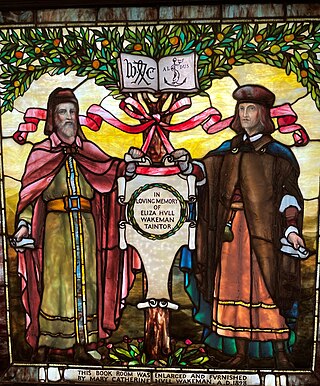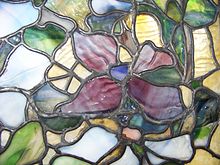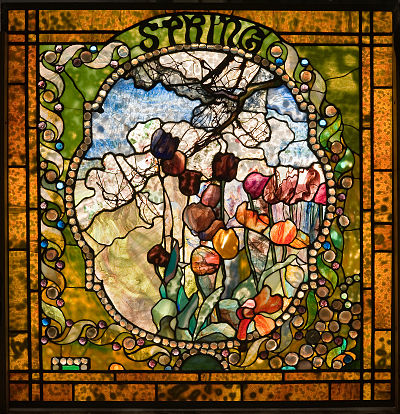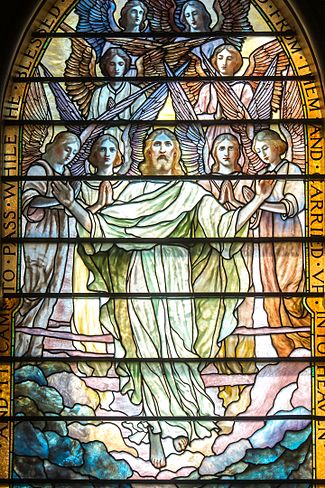
Louis Comfort Tiffany was an American artist and designer who worked in the decorative arts and is best known for his work in stained glass. He is associated with the art nouveau and aesthetic art movements. He was affiliated with a prestigious collaborative of designers known as the Associated Artists, which included Lockwood de Forest, Candace Wheeler, and Samuel Colman. Tiffany designed stained glass windows and lamps, glass mosaics, blown glass, ceramics, jewellery, enamels, and metalwork. He was the first design director at his family company, Tiffany & Co., founded by his father Charles Lewis Tiffany.

Stained glass is coloured glass as a material or works created from it. Throughout its thousand-year history, the term has been applied almost exclusively to the windows of churches and other significant religious buildings. Although traditionally made in flat panels and used as windows, the creations of modern stained glass artists also include three-dimensional structures and sculpture. Modern vernacular usage has often extended the term "stained glass" to include domestic lead light and objets d'art created from foil glasswork exemplified in the famous lamps of Louis Comfort Tiffany.

John La Farge was an American artist whose career spanned illustration, murals, interior design, painting, and popular books on his Asian travels and other art-related topics. La Farge made stained glass windows, mainly for churches on the American east coast, beginning with a large commission for Henry Hobson Richardson's Trinity Church in Boston in 1878, and continuing for thirty years. La Farge designed stained glass as an artist, as a specialist in color, and as a technical innovator, holding a patent granted in 1880 for superimposing panes of glass. That patent would be key in his dispute with contemporary and rival Louis Comfort Tiffany.

Favrile glass is a type of iridescent art glass developed by Louis Comfort Tiffany. He patented this process in 1894 and first produced the glass for manufacture in 1896 in Queens, New York. It differs from most iridescent glasses because the color is ingrained in the glass itself, as well as having distinctive coloring. Tiffany won a grand prize at the 1900 Paris Exposition for his Favrile glass.
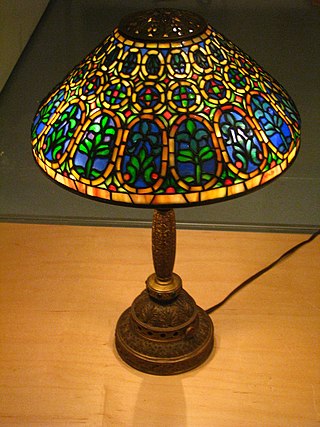
A Tiffany lamp is a type of lamp made of glass and shade designed by Louis Comfort Tiffany or artisans, mostly women, and made in his design studio. The glass in the lampshades is put together with the copper-foil technique instead of leaded, the classic technique for stained-glass windows. Tiffany lamps are considered part of the Art Nouveau movement. Considerable numbers of designs were produced from 1893 onwards.

The Arlington Street Church is a Unitarian Universalist church across from the Public Garden in Boston, Massachusetts. Because of its geographic prominence and the notable ministers who have served the congregation, the church is considered to be among the most historically important in American Unitarianism and Unitarian Universalism. Completed in 1861, it was designed by Arthur Gilman and Gridley James Fox Bryant to resemble James Gibbs' St. Martin-in-the-Fields in London. The main sanctuary space has 16 large-scale stained-glass windows installed by Tiffany Studios from 1899 to 1930.

Calvary Episcopal Church is one of the largest Episcopal congregations in New Jersey. It belongs to the Episcopal Diocese of Newark of the Episcopal Church in the United States of America, a member of the Anglican Communion.
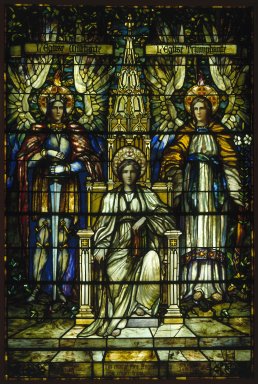
J&R Lamb Studios, America's oldest continuously-run decorative arts company, is famous as a stained glass maker, preceding the studios of both John LaFarge and Louis C. Tiffany.
Donald MacDonald (1841–1916) was a leading stained glass artisan and designer in 19th century Boston. Born Donald McDonald, he altered the spelling of his surname to "MacDonald" around 1877.

William Willet was an American portrait painter, muralist, stained glass designer, studio owner and writer. An early proponent of the Gothic Revival and active in the "Early School" of American stained glass, he founded the Willet Stained Glass and Decorating Company, a stained glass studio, with his wife Anne Lee Willet, in protest against the opalescent pictorial windows which were the rage at the turn of the twentieth century.
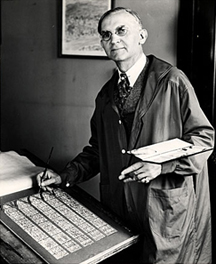
Charles Jay Connick (1875–1945) was a prominent American painter, muralist, and designer best known for his work in stained glass in the Gothic Revival style. Born in Springboro, Pennsylvania, Connick eventually settled in the Boston area where he opened his studio in 1913. Connick's work is contained in many preeminent churches and chapels, including examples in Boston, Chicago, Detroit, New York City, Pittsburgh, San Francisco, Seattle, and Washington, D.C. He also authored the book Adventures in Light and Color in 1937. Connick's studio continued to operate, and remained a leading producer of stained glass, until 1986.

Povey Brothers Studio, also known as Povey Brothers Art Glass Works or Povey Bros. Glass Co., was an American producer of stained glass windows based in Portland, Oregon. The studio was active from 1888 to 1928. As the largest and best known art glass company in Oregon, it produced windows for homes, churches, and commercial buildings throughout the West. When the firm was founded in 1888, it was the only creative window firm in Portland, then a city of 42,000 residents.

The Trinity Episcopal Church, Staunton VA. is a Gothic Revival style building in Staunton, Virginia. It is an active Episcopal church in the Diocese of Southwestern Virginia. It was listed on the National Register of Historic Places (NRHP) in 1972. It is located in the Newtown Historic District.

Katharine Lamb Tait was an American stained glass and mosaics designer, painter, muralist, and illustrator. She was the head designer at J&R Lamb Studios for more than four decades, and created notable commissions for the Tuskegee Institute Chapel and for chapels at the United States Marine Corps’ Camp Lejeune, among others.

Alfred Godwin (1850–1934) was an English-born stained-glass artist, who settled in Philadelphia, Pennsylvania.

Helen Maitland Armstrong was an American stained glass artist who worked both solo and in partnership with her father, Maitland Armstrong. Her work is considered among the finest produced in America in the late 19th and early 20th centuries.

Frederick Wilson was a British stained glass artist best known for his work with Tiffany Studios. He was a prominent designer of ecclesiastical windows in the United States during the late 19th and early 20th centuries.
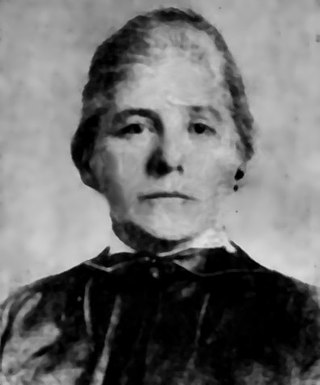
Margaret Redmond (1867–1948) was an American stained glass artist. Her work is characteristic of the medieval revival style, inspired by the fourteenth and fifteenth century stained glass of French and English cathedrals. She chose innovative glass materials, vibrant colors and thick leading designs for her windows, favored by the leading stained glass artists of the Arts and Crafts Movement in England. She is best known for her stained glass work from the 1920s to the 1940s, which can be found in churches, museums, homes and libraries from New Jersey to Maine.

Art Nouveau glass is fine glass in the Art Nouveau style. Typically the forms are undulating, sinuous and colorful art, usually inspired by natural forms. Pieces are generally larger than drinking glasses, and decorative rather than practical, other than for use as vases and lighting fittings; there is little tableware. Prominently makers, from the 1890s onwards, are in France René Lalique, Emile Gallé and the Daum brothers, the American Louis Comfort Tiffany, Christopher Dresser in Scotland and England, and Friedrich Zitzman, Karl Koepping and Max Ritter von Spaun in Germany. Art Nouveau glass included decorative objects, vases, lamps, and stained glass windows. It was usually made by hand, and was usually colored with metal oxides while in a molten state in a furnace.

Benjamin Sellers (1860–1930) was a stained glass artisan in the Northeastern US. He was a practitioner of the opalescent style of stained glass popularized by John La Farge and Louis Comfort Tiffany in the late 19th century.

